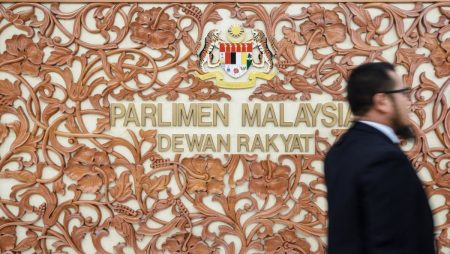From radars to rainforests, AI is proving to be a valuable tool in conservation efforts in Southeast Asia. Students from the Swedish University of Agricultural Sciences are conducting research in the forests of Sabah on Borneo island to study biodiversity and wildlife activity. By placing audio recorders in different landscapes, they aim to understand the ecosystem and the effectiveness of carbon credits. The recordings are then uploaded to an AI-powered platform called Arbimon for analysis, providing insights into the species and behaviors present in the area.
Arbimon was originally developed as a cloud-based program for storing and analyzing audio recordings at a university in Puerto Rico. It has since evolved to use pattern matching and clustering to identify specific sound signatures of different species. This technology has the potential to offer real-time insights into forest activity, allowing scientists to process a large number of recordings in seconds. Rainforest Connection, the non-profit organization behind Arbimon, is dedicated to protecting threatened ecosystems and has processed close to two billion analyses in various projects around the world.
Despite the potential benefits of using eco-acoustics in rainforest-rich countries like Malaysia and Indonesia, there are limitations around its use in Southeast Asia. Governments in the region are still wary about data collection and hosting data outside their own countries, posing challenges to the adoption of AI technology. To fully leverage the capabilities of AI in conservation efforts, Mr. Yassin from Rainforest Connection believes there needs to be decentralization and a global approach to sharing data. Systems like Arbimon, which serve multiple countries, need to be accepted on a global scale for widespread adoption in Southeast Asia.
AI-powered platforms like Arbimon are helping bridge the gap between scientific research and conservation efforts on the ground. By streamlining the analysis of audio recordings, researchers can quickly identify different species and behaviors in a fraction of the time. This technology is valuable for monitoring and protecting threatened ecosystems, allowing scientists to gain valuable insights into forest activity. Despite some challenges in adoption, the use of AI technology in conservation is growing rapidly and can play a significant role in preserving biodiversity in Southeast Asia and beyond.
The students conducting research in Sabah emphasize the promising nature of AI technology in their work. Without platforms like Arbimon, analyzing the thousands of hours of audio recordings they collect would be highly time-consuming and challenging. The ability to process recordings quickly and accurately provides researchers with valuable data on biodiversity and wildlife activity in different landscapes. As AI technology advances, it is expected that more species can be identified and studied, enhancing our understanding of forest ecosystems and the impact of conservation efforts.
Overall, the use of AI in eco-acoustics is proving to be a game-changer for conservation efforts in Southeast Asia and beyond. By providing quick and accurate analysis of audio recordings, platforms like Arbimon are enabling researchers to gain valuable insights into biodiversity and wildlife activity in different landscapes. While challenges around data collection and hosting remain, the benefits of using AI technology for conservation are vast. As more scientists and researchers leverage these tools, the potential for preserving threatened ecosystems and protecting biodiversity in the region is significant. With continued advancements in AI technology, the future of conservation efforts looks promising as we strive to protect and restore the natural world.













